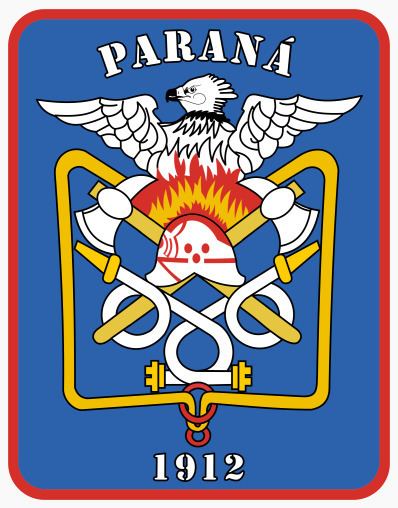Active March 23, 1912 Type Military Firefighters Nickname(s) CCB PMPR | Patron D. Pedro II | |
 | ||
In the State of Paraná, Brazil, the Firefighters Corps (Portuguese: Corpo de Bombeiros) is part of the structure of the Military Police of State.
Contents
The mission of the Firefighters Corps is the implementation of activities of Civil Defense, prevention and firefighting, search and rescue, and public assistance under the State of Paraná. The unit is reserve troop and ancillary force of the Brazilian Army, and integrating the system public security and social protection in Brazil.
Antecedents
The creation of a Firefighters Corps was suggested by Emperor in his visit to Paraná in 1880. The Municipality of Curitiba received from the D. Pedro II the amount of $500,000 for the purchase of a fire pump. However, because the amount be reduced, was acquired a small pump, inappropriate for use.
In 1882 was established that the Police Corps should develop training in fire fighting, to attend the capital of the Province.
Later, in 1886, the Municipality tried again to buy another pump of the Company of Apprentices Sailors (Portuguese: Companhia de Aprendizes Marinheiros) of Paranaguá city, but after being made an inspection, it was concluded that the bomb was useless.
After the Proclamation of the Republic, in 1894, was authorized the creation of a Section of Firefighters in the Security Regiment; which was increased to one company in 1906. But were not acquired the necessary equipment, and despite the lack of resources, the only service of fire fighting in the city of Curitiba, was conducted by German–Brazilian Society of Firefighters Volunteers (1897–1901).
The Firefighters Corps of Paraná was established in 1912. The unit was conceived militarized as the Sapeurs-pompiers of France, and followed by model the Firefighters Corps of the Federal District, with its structure, organization and uniforms. In 1917 it was annexed to the Military Police to serve as reserve troop, and in this period the unit had active involvement in the conflicts that occurred.
After a tumultuous period of revolutions, the Federal Government decided to demilitarize the firefighters to reduce the power of state forces. The situation is reversed only with the end of the Estado Novo, after the Second World War.
Reorganization
With the promulgation of a new Constitution in 1946, the federal legislation passed to allow the firefighters once again returned to Military Police. In Paraná it was to be incorporated in 1948, with full autonomy technical, administrative and financial.
At that time the Firefighters Corps was organized by Sections.
1967
In the sixties years has adopted the name Groupement (Portuguese: Grupamento), corresponding roughly to a company.
1976
The Groupement has become designated as Groupement of Fire (Portuguese: Grupamento de Fogo), corresponding roughly to a battalion; divided into Subgroupement of Fire (Portuguese: Subgrupamento de Incêndio), with an effective of company; subdivided in Section of Fire Fighting (Portuguese: Seção de Combate a Incêndio), with an effective of platoon.
The Groupement of Life Guards was transformed into Groupement of Search and Rescue (Portuguese: Grupamento de Busca e Salvamento).
1994
In 1994 there was a remodeling of the structure, and the Groupement of Fire came to be called as a Groupement of Firefighters (Portuguese: Grupamento de Bombeiros). The Groupement of Search and Rescue is dissolved to form new units.
Historic Designations
Uniforms
The Firefighters Corps of Paraná wear the same uniforms of the Military Police of Paraná, just adding their badges and insignias.
Stable belt
In Brazil this belt is designated like gymnastic belt (Portuguese: cinto ginástico). It is one of the most traditional items of the uniforms of the Military Firefighters Corps; which is used with few modifications, since 1887. At first it was rather reinforced, made of cotton and leather, to serve as climbing harness. Today it is mild and only serves as a ceremonial item.
There are only two models of belts:
